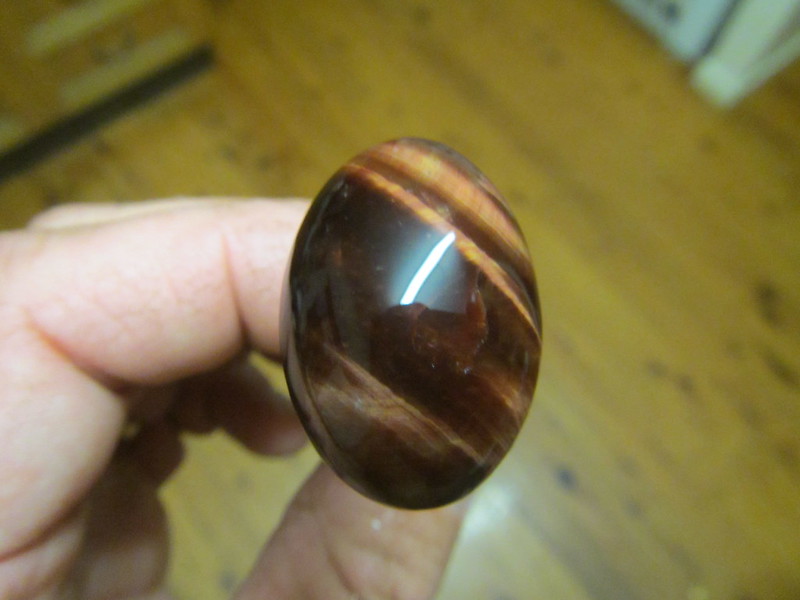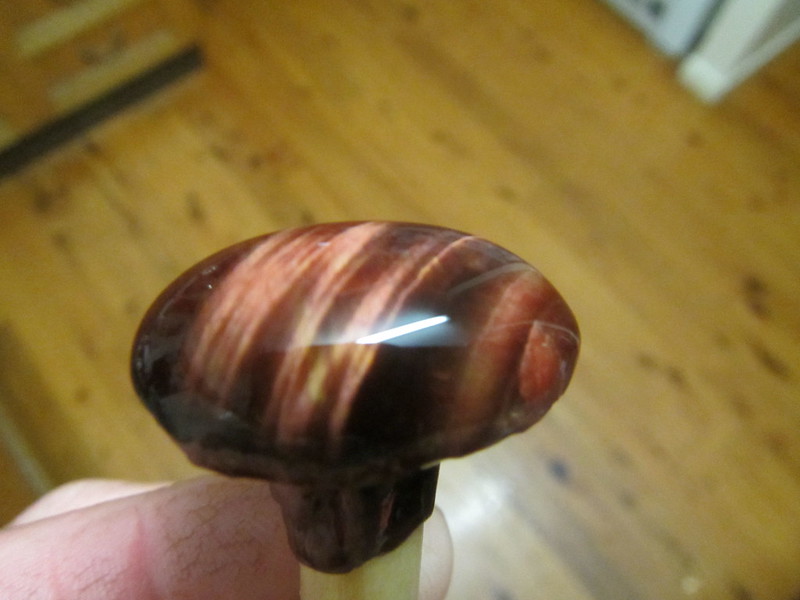- Joined
- May 1, 2014
- Messages
- 1,958
- Reaction score
- 2,530
Long time fossicker, new to lapidary. I'm currently working on a tiger eye cab that demonstrates a beautiful chatoyancy but unfortunately has had a couple of major cracks that were not visible at the surface emerge during cabbing. I am still working on the 220 grit trying to remove a couple of tiny flat spots. When the stone is wet the cracks are less obvious but once the thing dries right out they become very noticable. Anyone here done much work with this material? Any tips or tricks that might help? Had some advice from other places, just searching for all the info I can get.
Cheers all.


Cheers all.





